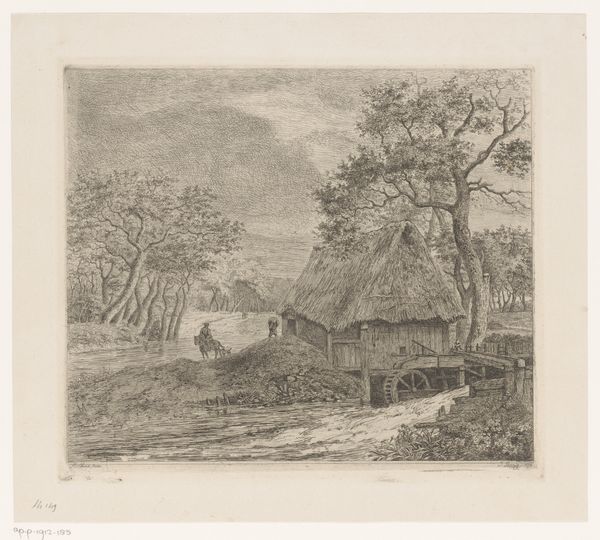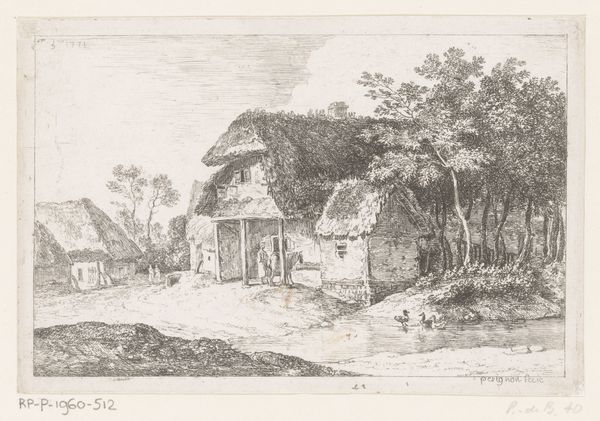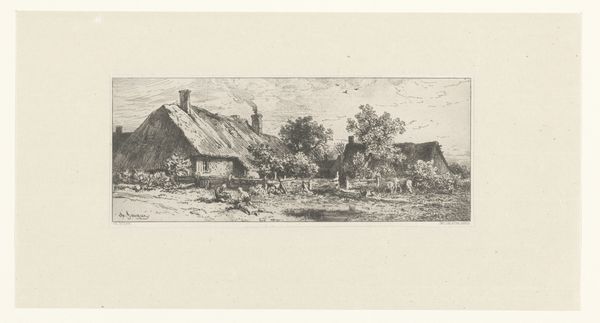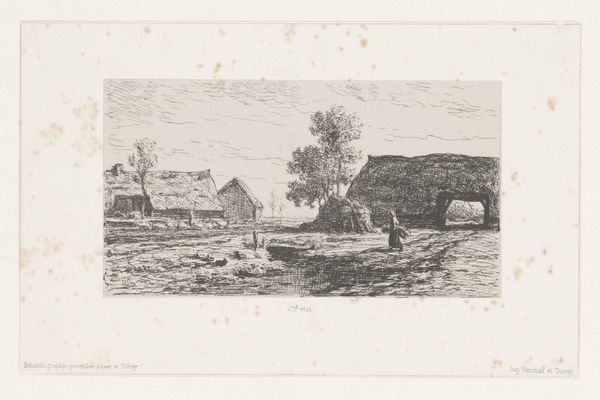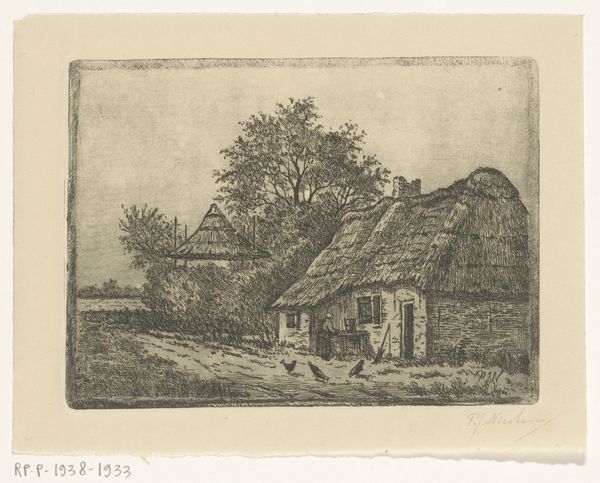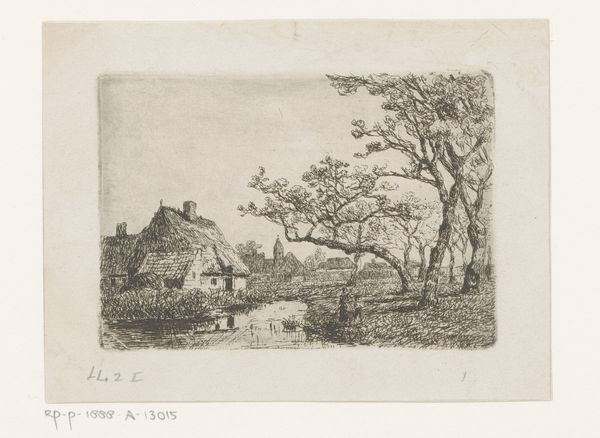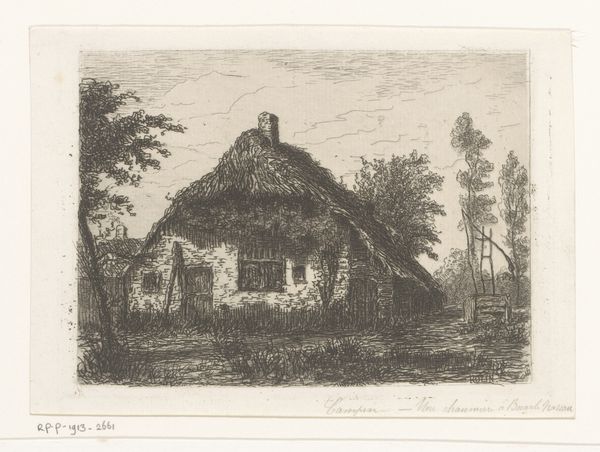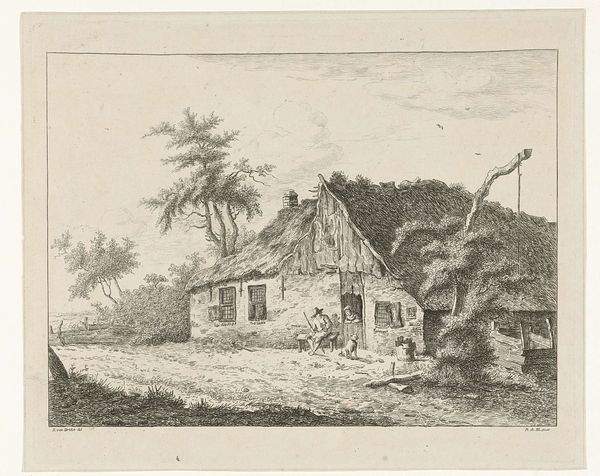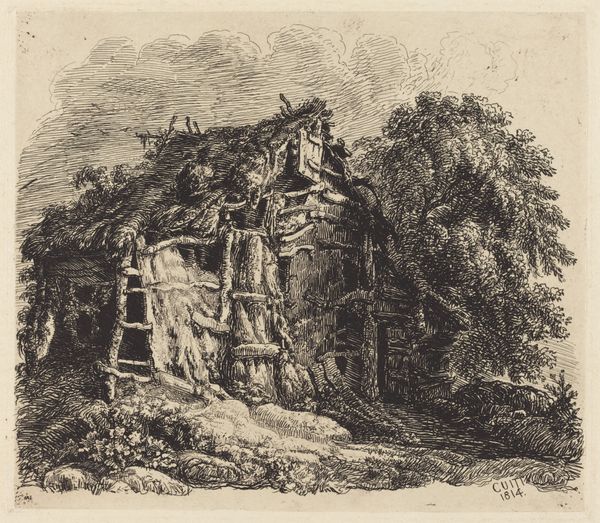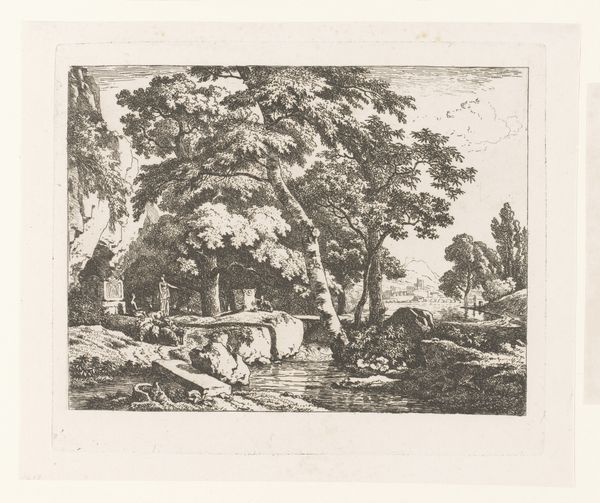
print, etching
#
dutch-golden-age
# print
#
etching
#
landscape
#
realism
Dimensions: height 244 mm, width 281 mm
Copyright: Rijks Museum: Open Domain
Jean Théodore Joseph Linnig created this etching, "Landschap met watermolen," depicting a waterscape with a mill. Linnig, a Belgian artist, worked during a time of significant social and economic change. This image presents a seemingly idyllic scene of rural life. However, it's important to consider the social context of the time, particularly the lives of rural workers. How does Linnig's depiction engage with the realities of labor and class? Does it offer a romanticized view, or does it hint at the complexities of rural existence? The mill itself becomes a focal point, symbolizing both industry and the harnessing of natural resources. Consider the relationship between the figures in the landscape and the built environment. Are they in harmony, or is there a sense of tension? This artwork invites us to consider the ways in which landscapes are not merely passive backdrops but are actively shaped by human presence and power dynamics.
Comments
No comments
Be the first to comment and join the conversation on the ultimate creative platform.
